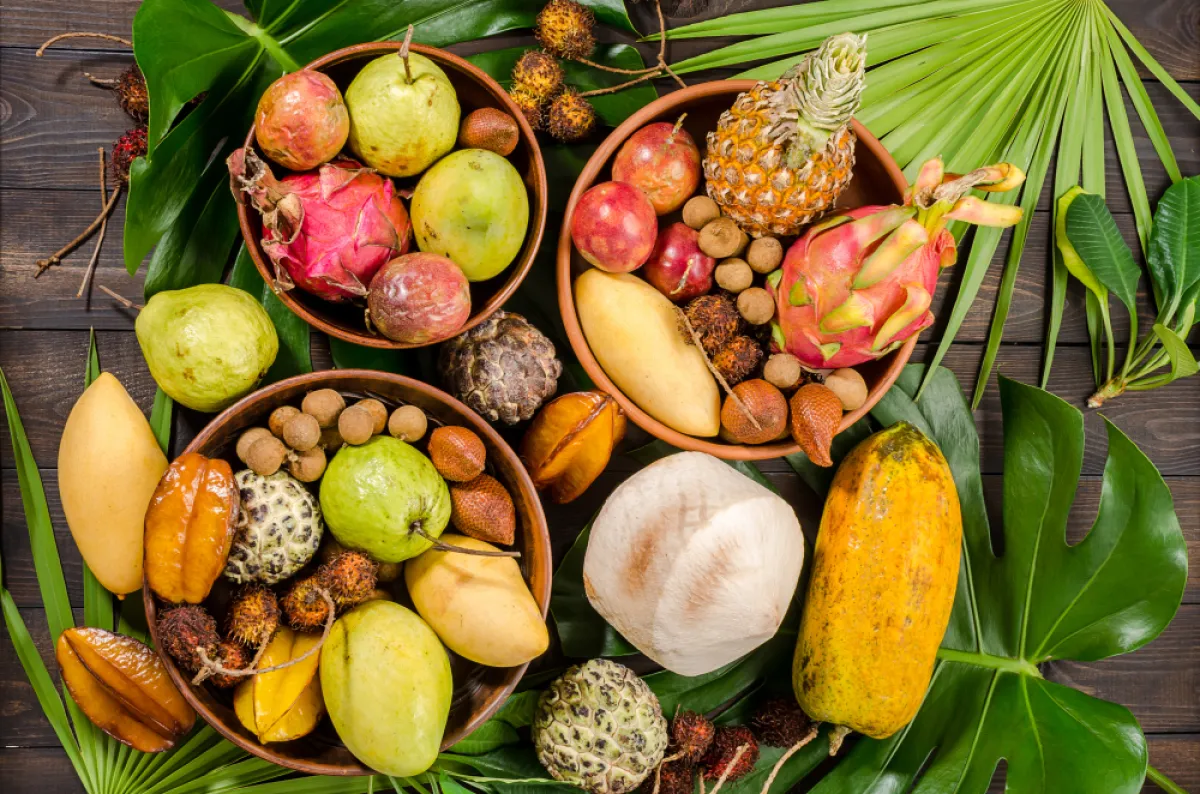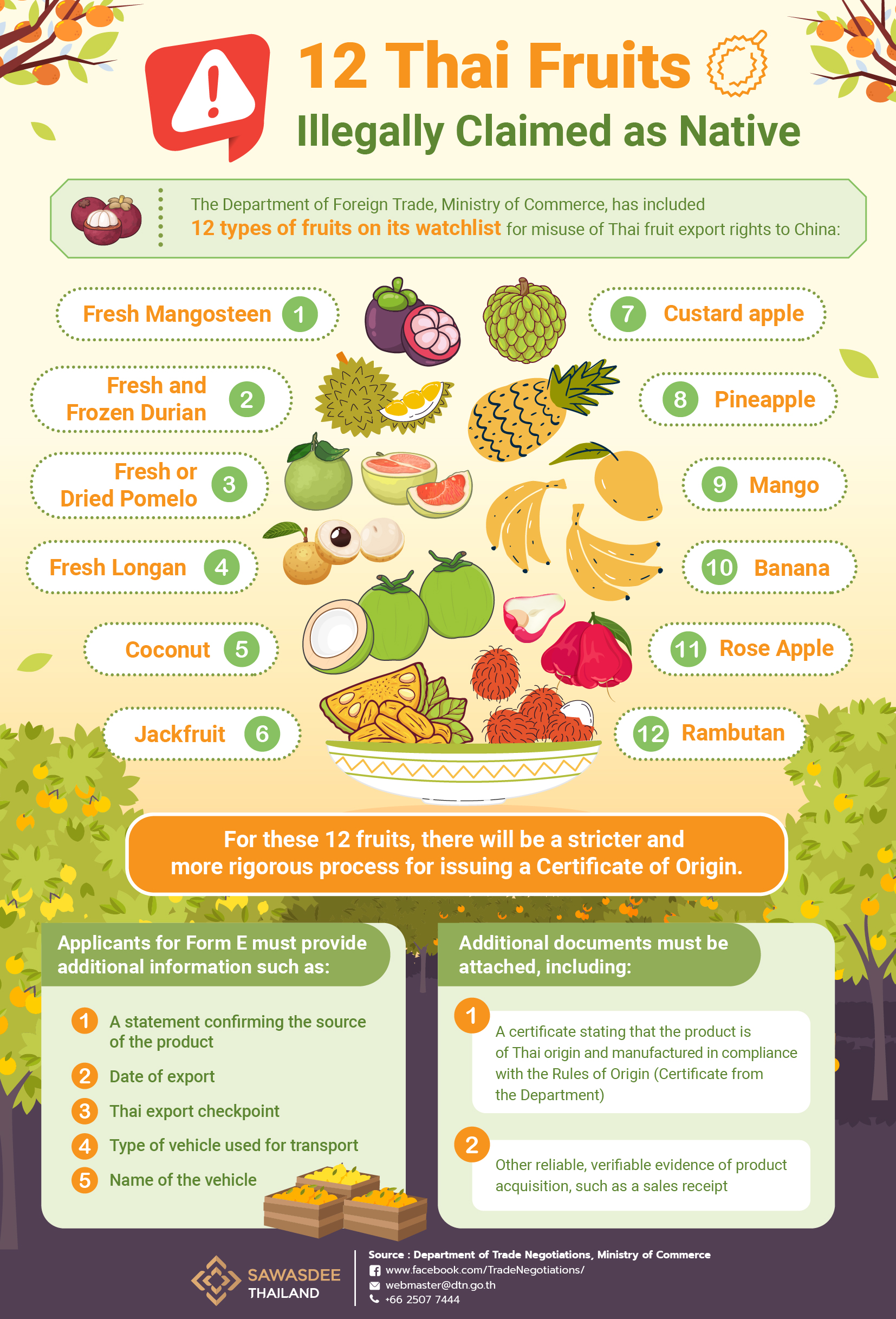
Thai fruits have gained tremendous popularity in the global market, especially for exports to China. However, it has been discovered that some parties illegally import fruits from neighboring countries to falsely claim Thai origin, in order to export to China.
The Department of Foreign Trade, Ministry of Commerce, is keeping a close eye on this misuse of Thai fruit export rights to China, particularly during March each year, which marks the beginning of Thai fruit season and high volume exports. Numerous reports and complaints have been received from farmers that unscrupulous parties are smuggling in various types of fruit, especially durians, from neighboring countries for export to China. They exploit the Certificate of Origin Form E (a document that certifies a product’s national origin for manufacturing and export purposes within the ASEAN-China Free Trade Area, which can be used for import tax reduction in China) to apply for customs tax privileges. Such actions are illegal misrepresentations of product origin, using Thailand as a base for fraudulent claims, which can harm the image and reputation of Thai fruits.
The Department of Foreign Trade, Ministry of Commerce, has included 12 types of fruits on its watchlist for misuse of Thai fruit export rights to China:
For these 12 fruits, there will be a stricter and more rigorous process for issuing a Certificate of Origin. Applicants for Form E must provide additional information such as:
Furthermore, additional documents must be attached, including:
At the same time, Thai fruit exporters to China must comply with the Department of Agriculture's 2021 announcement on the requirement for a Phytosanitary Certificate for fruit exports from the Kingdom of Thailand to the People's Republic of China, Clause 9 (1) – (3), which stipulates that exported fruits must come from fruit orchards or packing houses (Lhong) that are registered both by the Department of Agriculture and the General Administration of Customs of China (GACC).
The fruit orchard owners will receive a certificate of Good Agricultural Practices (GAP) standards for food plants, while packing house (Lhong) owners will receive a certificate showing the registration of their plant product manufacturing facilities (DOA) along with other documents such as a report of inspection operations of export fruits at the packing house, labels or tags showing necessary information on the packaging.
The Department of Agriculture has exchanged registration information with the Chinese Customs Office to confirm the legitimacy of the fruit sources. Therefore, if exporters buy fruit from orchards or packing houses (Lhong), they can use these documents to support their application for Form E to demonstrate the traceability of raw materials or products that can be verified and trusted as specified.
From the issuance of Form E certificates for fruit products with customs codes 0801 – 0810 in BE 2566 during the first two months (January - February) of 2566, there were a total of 13,034 issues, equating to an export value of 420 million US dollars. The top three highest exported fruits were (1) fresh durian (2) coconuts, and (3) fresh longan.
Source: Department of Trade Negotiations, Ministry of Commerce
Tel. +66 2507 7572
